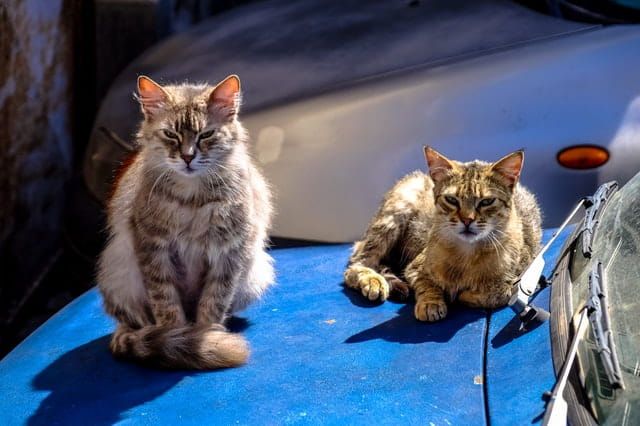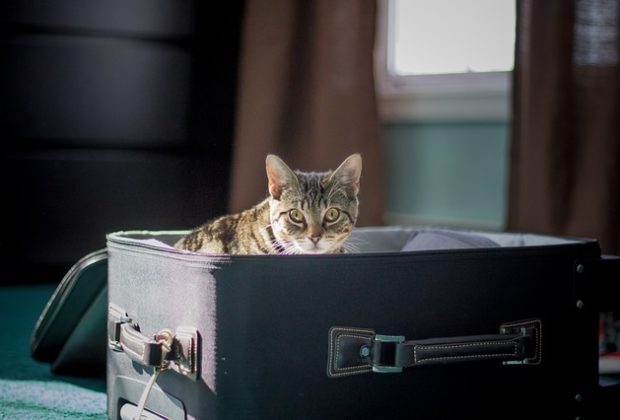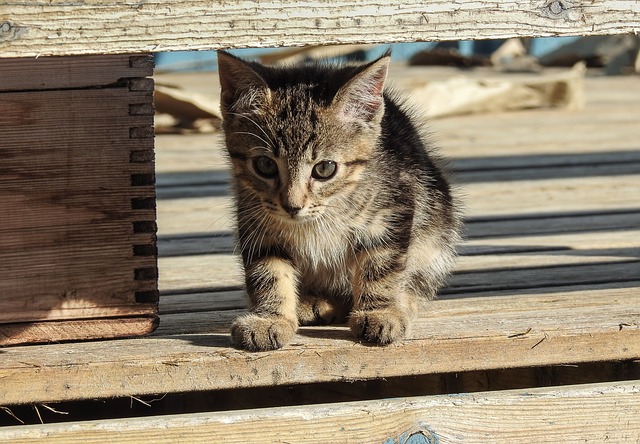For most pets, traveling can be challenging. Cats are no exception. So, whether you’re traveling across the country, across the world, or even just across town, there are many safety precautions you want to take for both you and your feline’s safety.
You want to ensure that your cat’s first traveling experience is pleasant. Because like all pets, cats do not imagine events that have never happened to them; past experiences form their opinions on many things, including travels and car rides. Just one “not-so-pleasant trip” can make your pet dread traveling, and you don’t want that, especially when you need him on that trip with you. In this article, we’ll walk you through 5 ways you can transport your cat safely. Read on.
Table of Contents
Transporting Your Cat – Crate or Carrier
First, if you reserved car rides with your cat for trips to your vet, then it’s time to reprogram your cat’s mindset. Before your first major car trip with your pet, you’ll want to make the car an area your cat looks forward to being in. You can start by taking it on short trips around the block and then go a little farther than your usual distance as the major trip draws near. During these trips, you want to make sure that your cat is riding just how it will during the move. And this is usually either in a harness, crate, or carrier for restraint.
Why a Restraint Is Important
Any unsecured pet riding with you in a car is a potential missile in an accident. You also want to concentrate on the road instead of the pet on your lap or under the pedals. Getting a cat to sit comfortably inside a restraint will require some training, so make sure you train your cat before the trip.
If you're unsure which restraint to use, a carrier or a crate are great options. Carriers are smaller and often the preferred choice for air travel as they are with solid sides. Crates, on the other hand, are generally larger and more spacious.
If you’re buying a crate for the first time, you want to pick one with several openings, especially if your cat isn't used to being in it. Plus, getting the cat inside the crate will be easier.
Also, if you’re concerned about scratching, select a crate with a hard plastic instead of a soft-sided fabric. Another thing you want to do is choose a crate or carrier that is easy to clean if your pet suffers from motion sickness or if the drive to your destination is very long.
Whichever you finally settle for, crate or carrier, make sure it is secured in the back seat or an easily accessed area in a minivan. Also, ensure that your cat can sit, stand, and turn around comfortably during the trip.
Limit Your Cat's Food Intake During the Trip
Feed your cat small portions before and during a trip. Just like humans, cats can experience stomach upsets during travels, and you want to minimize that by cutting down their meal on the day of your trip. Water at each stop is fine, but meals should be in small portions. Larger meals can be reserved for when you arrive at your destination.
Concerned about your cat’s hydration? You can encourage it to drink more water by pouring a slow stream into a bowl and letting him drink from it. Cats enjoy water better when it’s from a moving source (like a water fountain), and the slow stream bowl method offers the cat just that on transit.
Spritz and Soothe Before and While You Travel
During the journey, anxiety can set in. However, this can be managed with pheromone sprays used on the cat’s bedding. CBD is also a great option for calming anxious pets.
Another effective method to manage cat anxiety on transit is by applying soothing touches. These touches involve the use of circular movements with the fingers and hands all over the cat’s body. The technique can give your cat a lot of relief from fear, car sickness, and nausea.
Ensure Every Part of Your Cat Stays Inside the Car
Yes, every single time. Forget those “cute” images of pets hanging out in car windows. Letting your cat hang out of the window is very dangerous, not only because your cat can easily fall out but also because it is hard to tell how your cat reacts to happenings around the moving car.
Also, never transport your feline in the back of an open pickup truck. The safest place for your cat is in a secured carrier inside the vehicle. Cats are easily scared, and letting them stay alone in the back of an open pickup can cause them to jump out when spooked by noise or an unexpected vehicle movement.

Stop For Breaks
While this may be the most challenging part about transporting your cat, there is really little you can do about it. With dogs, this part is almost too easy; With the leash in hand and a little walk, it can do its business. It’s a different story for cats. On a long car ride, it needs a litter box. So, take one along and allow your cat access to it during breaks.
If you, however, need to take your cat outside the vehicle for any reason at all, make sure you have a collar or harness with an ID or GPS tracker attached to it. The harness and leash will help you ensure that your cat doesn’t go too far if it jumps out of your arms.
Clear All Potential Hazards
Even when secured in a crate or carrier, their paws may still be able to reach things. To prevent hazards, especially when your car is packed full of stuff, make sure there is nothing within its reach to cause him any harm or damage when pushed or pulled. Be thorough with your check. Chemicals and some plants can be toxic if ingested; cords and strings can pose strangulation risks. Small items should not be left out as they’re all too easy for your cat to choke on, so do your part by clearing those out.
To fight boredom that may cause him to tug at things, make sure two or more of his favorite toys are placed inside the carrier. These items help keep your cat occupied. They remind him of home and smell familiar, which reduces your cat’s stress level during the journey.
Lastly, it would help if you considered traveling with another human, depending on the length of the trip. Caring for your cat and driving can be stressful, and another human around can help you share the task of driving and the pet’s care.
Final Words
There you go; some ways to safely transport your cat. Note, however, that cats are naturally finicky, and you may need to make some personal adjustments to these tips for maximum effectiveness. Also, cats can be temperamental, and even the most minor things may get it triggered, particularly on a long-distance road trip.
As said earlier, though, most of these behaviors can be managed with some techniques like the rubbing and also by dosing on vet-approved CBD or CBD-based products. Additionally, you want to check with your vet to ensure that your feline is certified fit and healthy for transporting, especially for a long road trip.
Ever traveled or transported a cat over a long distance? Please share your experience with us in the comments below.
About the Author
Kirsten Heggarty
Kirsten created The Pet Handbook with the aim of sharing her knowledge about pets, pet food, healthy habits, and more. All of her advice is based on years of her own experience with her pets, and feedback that she has received from grateful readers about her tips. If you want to know more please read the About Me page.









